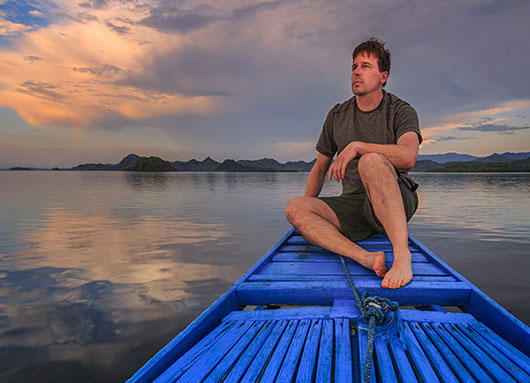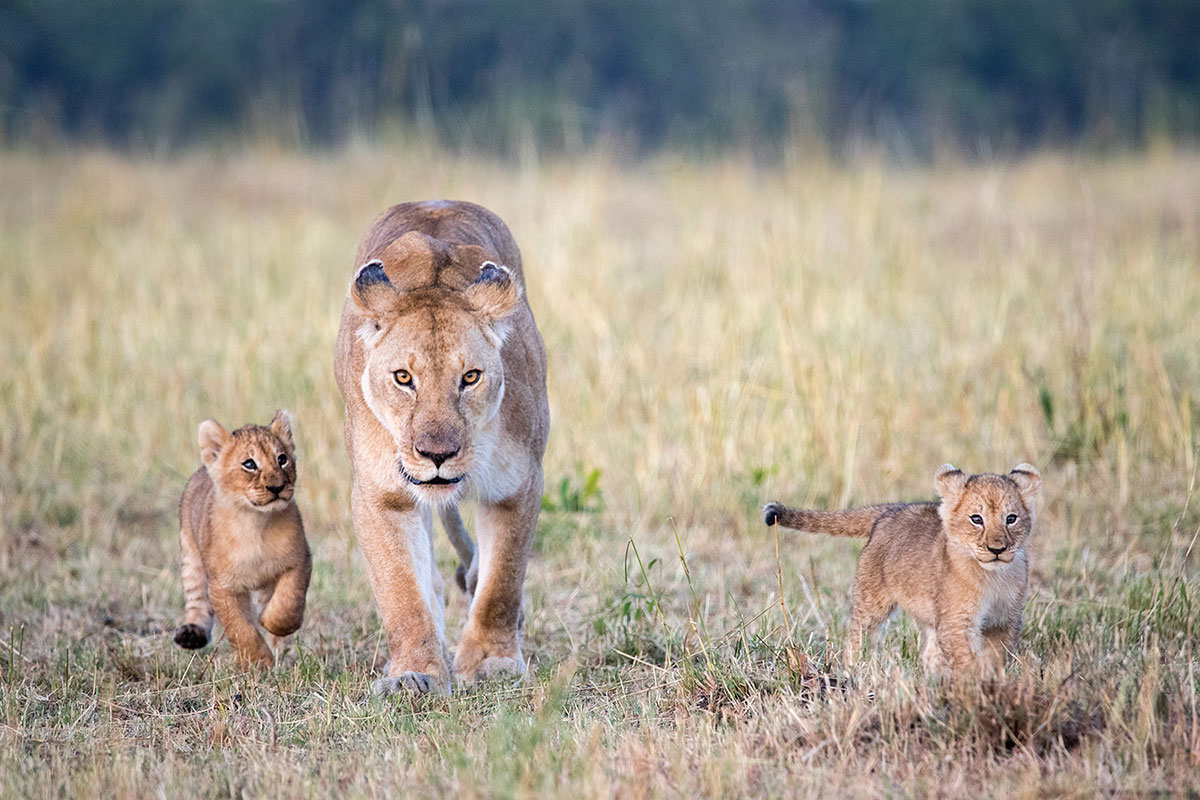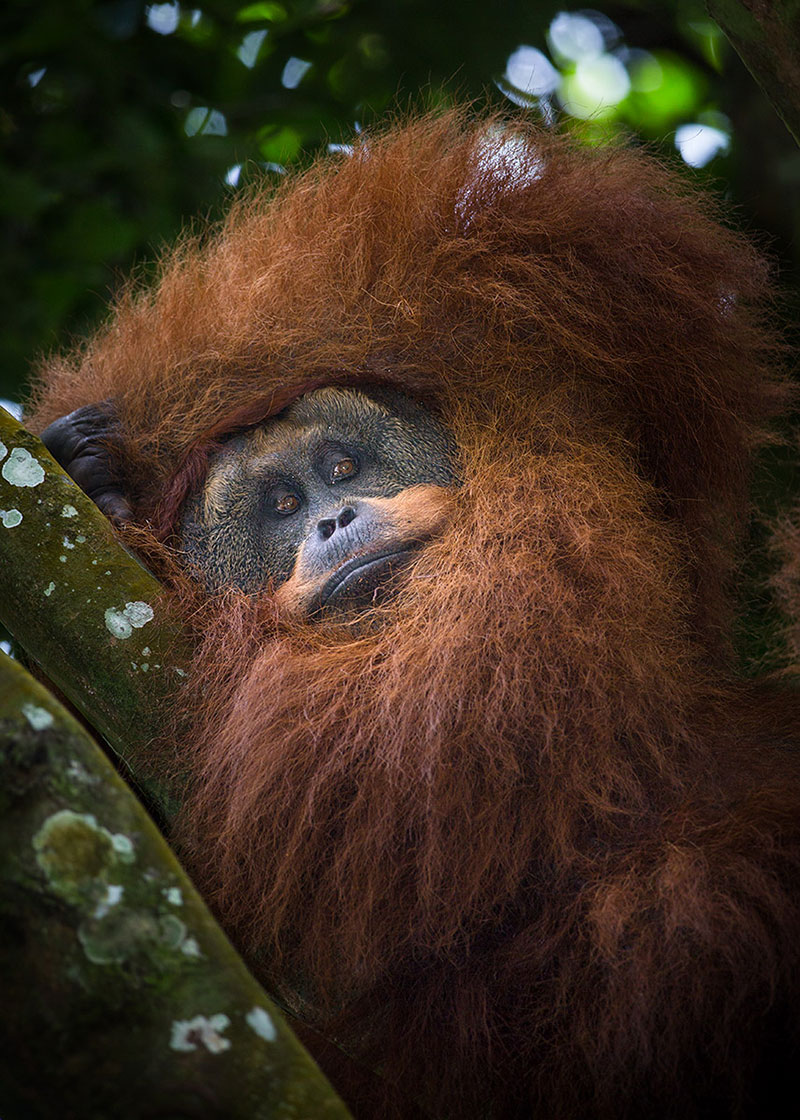You need a passport to visit other countries!
This one seems obvious, but just in case you are wondering, you will need to obtain a passport before leaving your home country. Typically, you cannot enter another country without a passport, and you might even have trouble getting back home without one as well. It usually takes several weeks to obtain a passport, so if you don’t already have one and are planning an overseas photo trip, start the process well in advance (expedited passports are available on short notice, but at a hefty extra cost). Namib-Naukluft National Park, Namibia. Canon 5DIII, Canon 11-24mm f/4 lens, ISO 100, f/11, 1/40 second, focus stack blend for enhanced depth of field.Don’t forget to check visa and entry requirements.
Many countries offer visa on arrival for US, Canadian, and EU citizens, but some do not, so check ahead of time to see if you need to secure a visa in advance (some countries will also charge an entry fee). I have a colleague who traveled to Brazil without realizing he needed to obtain a visa prior to entering the country; although he managed to sneak in, he almost got caught on the way out. Needless to say, this is not the way to do things! Check entry requirements well in advance of your travel. The US State Department is a good place to start, as they keep detailed information regarding the location of US embassy and consular offices overseas, visa requirements, crime and security information, health and medical requirements and recommendations, dangerous “hot spots,” and more.Also, if you are a part- or full-time professional photographer, you might need to obtain a work visa before entering a foreign country. Typically, this is not the case if you are simply a freelancer, but if you are traveling to lead a photo tour or on assignment, a work visa might be necessary. Unfortunately, very few countries are clear about their work visa requirements; if you can’t find the necessary information online, the best thing to do is contact an embassy of the country you are visiting and hope for a response.
Take these entry requirements seriously! The last thing you want is to ruin your expensive photography trip by being denied entry.
Masai Mara National Reserve, Kenya. Canon 1DXII, Tamron 150-600mm f/5-6.3 G2 lens, ISO 3200, f/7.1, 1/320 second.Don’t forget to check for medical and vaccination requirements.
Some countries require specific vaccinations for persons seeking entry. And many countries recommend (but do not require) certain vaccinations and/or prophylactic medicines for diseases that may be common (such as malaria). The US State Department website referenced above is a good place to start; consult with a travel clinic well in advance of your departure if traveling to an area of concern, as some vaccinations need time to start working properly. One of the most common vaccination requirements is for yellow fever; if you plan on doing a lot of travel, consider getting vaccinated to avoid any possible hassle. I always carry my International Certificate of Vaccination, which lists my vaccinations, just in case I need it when traveling.More generally, check whether it is safe to drink the local water or not (or, err on the side of caution and always drink bottled water). Also, I always travel with a bag full of medicine for colds/flus and traveler’s diarrhea, so that way, if I catch something, I can at least alleviate the symptoms somewhat. Another handy item you should consider: a good first aid kit.
Be careful with customs declarations.
Most countries “don’t” require you to declare personal photography equipment upon entry. I say “don’t” in quotes because declaration requirements are rarely clear (customs forms are usually vague, and not always in coherent English), and vary from country to country. I typically don’t declare my photography equipment, but when in doubt, declare what you have or at least ask a customs official before turning over a signed customs declaration. I got stopped once in Peru and was told by the customs official that I was supposed to declare my camera lenses; I’m pretty sure he was wrong, and he eventually let me through with a polite warning, but for a few moments I was worried I was going to face a steep fine for failure to declare my equipment.You might also have problems reentering the US from trips abroad with photo equipment, as it is possible that customs officials might think you purchased the equipment while abroad and are therefore subject to a customs tax. If the equipment is obviously used and banged up a bit, you shouldn’t have any problems, but if you have recently purchased equipment with you, carrying a receipt might be a good idea to prove you didn’t purchase the item while traveling.
Photographers traveling with a lot of equipment might consider certain customs documents before leaving their home country so they don’t get hassled abroad or when they return. One option in the US is called a “Certificate of Registration for Personal Effects Taken Abroad” (form CBP 4457), but this will only facilitate your re-entry to the US. Another option is to obtain what is known as a “Carnet” for your photo gear, which is an international customs and temporary export-import document that facilitates the movement of certain goods across borders and provides protection from import duties both home and abroad. For most photographers, these are cumbersome and perhaps unnecessary steps, but if you want to avoid the risk of being fined or taxed when traveling with expensive photo equipment, both are worth considering.
Research photography rights in foreign countries.
Remember, individual freedoms and rights vary from country to country. While most democracies around the world protect photography as a free speech/expression right, some countries frown upon people walking around taking pictures—or forbid photography in certain places altogether. Do some research first to make sure you’re not going to attract unwanted negative attention while photographing.Related article: Photographing People in Other Cultures: How to Shoot with Courtesy and Respect
Always smile!
If you have any problems with foreign officials when traveling, it is best to stay friendly and play dumb. Smiling while acting confused can do wonders for you, and is certainly better than acting outraged and angry. Whatever you do, don’t lie to customs or immigration officials. Of course, being honest doesn’t preclude you from being vague; I keep my responses succinct and don’t volunteer anything that hasn’t been specifically asked for, and if a broader answer will suffice, I use it. For example, when asked my purpose for entering a foreign country, I might say “tourism” rather than “I’m here to take photographs”—both are true, but one answer reveals less than the other and might help me avoid further screening. Just be careful: you can be denied entry, fined, or even imprisoned, so don’t mess around! Gunung Leuser National Park, Indonesia. Canon 5DIII, Canon 200-400mm f/4 lens with built-in 1.4x converter, fill flash, ISO 400, f/5.6, 1/200 second.Get some ZZZZZs.
Nothing cures jet lag and travel fatigue better than getting a good night of sleep. That’s why I always bring earplugs (some people prefer noise-canceling headphones) and a sleeping mask to help me sleep even in noisy and bright places (both can also be helpful if you have a roommate while traveling who snores or has unusual nighttime habits). Sleeping on redeye flights can be a nightmare, so I always carry a travel pillow to make the experience (marginally) more comfortable. I also bring melatonin chewables, which naturally supplement the body’s own melatonin production (darkness causes the body to produce more melatonin, which helps induce sleepiness) and help promote a regular sleep cycle when changing time zones.Conclusion
With a little bit of planning, international photo travel can be safe, fun, and free from hassle. I’m interested, however, in hearing about your less pleasant experiences when traveling internationally with you photo gear! Feel free to share your stories in the comments.If you haven’t yet already, make sure to check out Part One of this series: Tips for Airline Travel with Photography Equipment
 About the author: Whether hanging over the rim of an active volcano, braving the elements to photograph critically-endangered species, or trekking deep into the wilderness to places most people will never see, world-renowned professional photographer Ian Plant travels the globe seeking out amazing places and subjects in his never-ending quest to capture the beauty of our world with his camera. Ian is a frequent contributor to many leading photo magazines, Managing Editor of Outdoor Photography Guide, a Tamron Image Master, and the author of numerous books and instructional videos. Known for his inspiring images and single-minded dedication to creating the perfect photo, Ian has reached hundreds of thousands of people around the world in his mission to inspire and educate others in the art of photography. You can see more of his work at www.ianplant.com.
About the author: Whether hanging over the rim of an active volcano, braving the elements to photograph critically-endangered species, or trekking deep into the wilderness to places most people will never see, world-renowned professional photographer Ian Plant travels the globe seeking out amazing places and subjects in his never-ending quest to capture the beauty of our world with his camera. Ian is a frequent contributor to many leading photo magazines, Managing Editor of Outdoor Photography Guide, a Tamron Image Master, and the author of numerous books and instructional videos. Known for his inspiring images and single-minded dedication to creating the perfect photo, Ian has reached hundreds of thousands of people around the world in his mission to inspire and educate others in the art of photography. You can see more of his work at www.ianplant.com.
Have something to add to the story? Leave a comment or email editor@outdoorphotographyguide.com.




Try to learn at least a little of the language used most commonly in the country you are going to visit - "please" and "thank you," particularly. In my younger days, I took a trip from Italy, where my ship was temporarily ported, to Denmark ( by flight) and returned by Eurail. Crossing from Denmark to Germany, our cabin was opened by a customs official, who asked auf Deutsch (in German) if we had anything to declare. I understood all but the last word in his query and was at a loss to answer. Fortunately, I was sharing a cabin with several European students, most of whom spoke English almost as well as I did. One translated the question for me, and under the official's glare, I was able to respond, "Eine Kamera." He shut to door and moved on to the next compartment. Although I had taken four years of German in high school, one word not in my vocabulary almost got me arrested. Later on the same trip in Dijon, the French train officials wanted to route me through Lausanne to get to my ultimate destination, Naples. I spoke no French, they spoke no English. Fortunately, a German student who spoke French came to my aid as a translator. After explaining that I intended to stay four days in Bern, they got me onto the correct train. If you are stumped in a similar situation, ask anyone around for help.
The most recent flight safety concern has made the need to place cameras into the checked baggage area a reality. However, I read this as meaning the camera body only. Lenses should not be considered a safety issue for obvious reasons. Any one have any experience with this issue? Thanks
I had the same problem in Peru , I was there December 2016. I was carrying canon 500mm. After the x ray one agent took my lens to customs. I was told it is a professional lens and I should declare? Pay 20% and they will return when I am leaving the country. I was upset, this was not good. At the end he let me go with my lens without payment. It was a bad experience. He said my passport is check and if next time I do it declare it may confiscated? I will not bring big lens again.
I like the point about needing a passport. This is presumably for an American audience? I live somewhere were I crossed an international border four times a day just to go to work and back!
Cool respite from technicals but much needed if hot to trot at moments notice. Any aforementioned can be a major snag and downer on any journey. Appreciative even if just traveling for pure pleasure. Thanks!